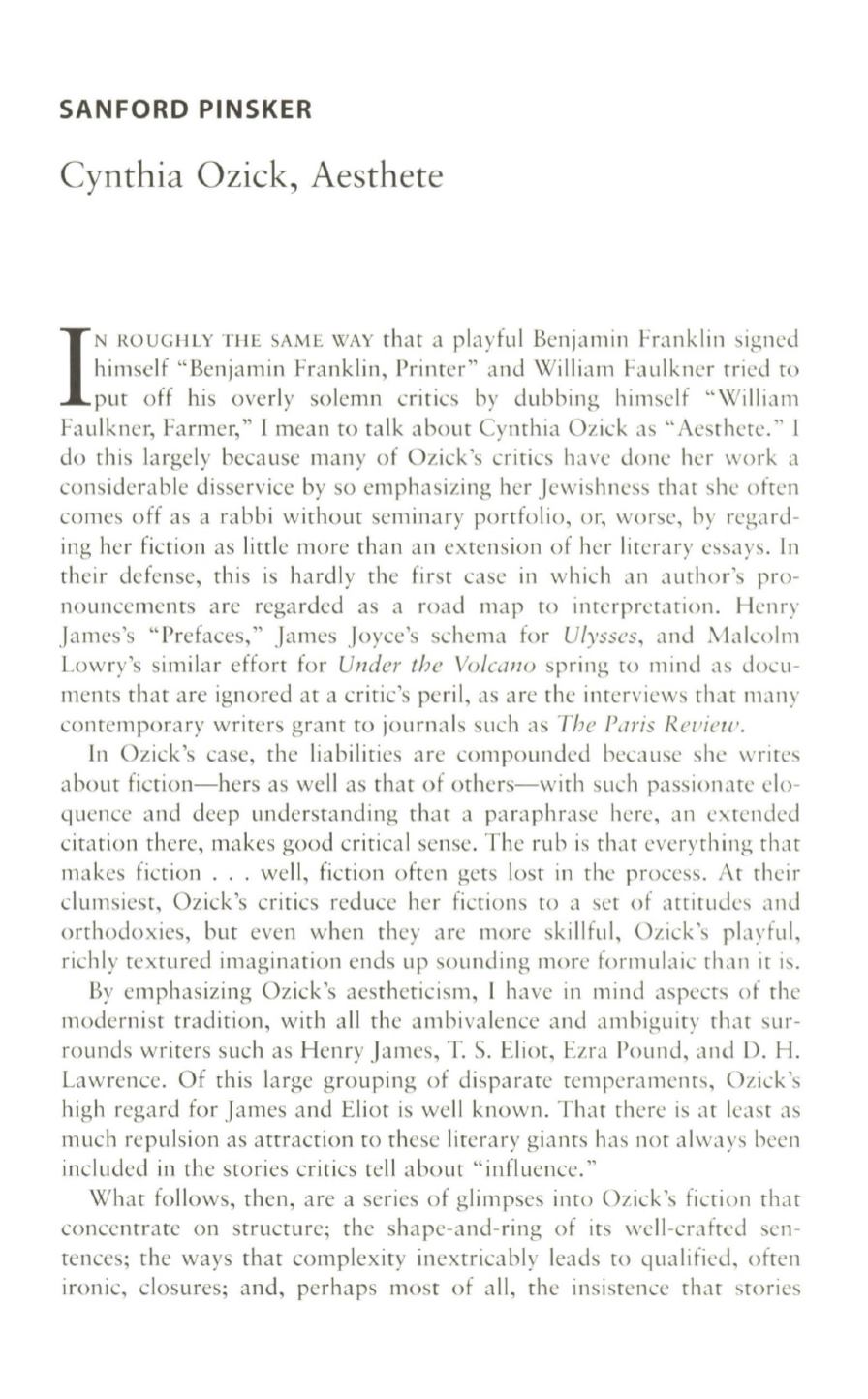
SANFORD PINSKER
Cynthia Ozick, Aesthete
I
N ROUGHLY THE SAME WAY
that a playful Benjamin franklin signed
himself "Benjamin Franklin, Printer" and William faulkner tried
to
put off his over ly solemn critics by dubbing himself "William
Faulkner, Farmer," 1 mean to talk about Cynthia Ozick as "Aesthete." I
do this largely because many of Ozick's critics have done her work a
considerable disservice by so emphasizing her jewishness that she often
comes off as a rabbi without seminary portfolio, or, worse, by regard–
ing her fiction as little more than an extension of her literary essays. In
their defense, this is hard ly the first case in which an author's pro–
nouncements are regarded as a road map
to
interpretation. Henry
james's "Prefaces," james joyce's schema for
Ulysses,
and Malcolm
Lowry's similar effort for
Under the Volcano
spring to mind as docu–
ments that are ignored at a critic's peril, as are the interviews that many
contemporary writers grant to journals such as
The Paris Reuiew.
In Ozick's case, the liabilities are compounded because she writes
about fiction-hers as well as that of others-with such passionate elo–
quence and deep understanding that a paraphrase here, an extended
citation there, makes good critical sense. The rub is that everything that
makes fiction ... well, fiction often gets lost in the process. At their
clumsiest, Ozick's critics reduce her fictions to a set of attitudes and
orthodoxies, but even when they are more skillful, Ozick's playful,
richly textured imagination ends up sounding more formulaic than it is.
By emphasizing Ozick's aestheticism, 1 have in mind aspects of the
modernist tradition, with a ll the ambivalence and ambiguity that sur–
rounds writers such as Henry james,
T.
S. Eliot, Ezra Pound, and D. H.
Lawrence. Of this large grouping of disparate temperaments, Ozick's
high regard for james and Eli ot is well known. That there is at least as
much repulsion as attraction to these literary giants has not always been
included in the stories critics tell about "influence."
What follows, then, are a series of glimpses into Ozick's fiction that
concentrate on structure; the shape-and-ring of its well-crafted sen–
tences; the ways that complexity inextricably leads to qualified, often
ironic, closures; and, perhaps most of all, the insistence that stories


